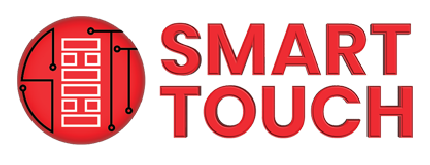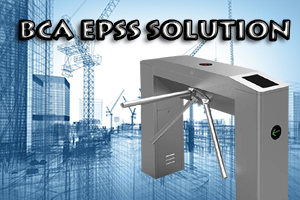Best Implementation of Safe Entry in Singapore For Digital Check In
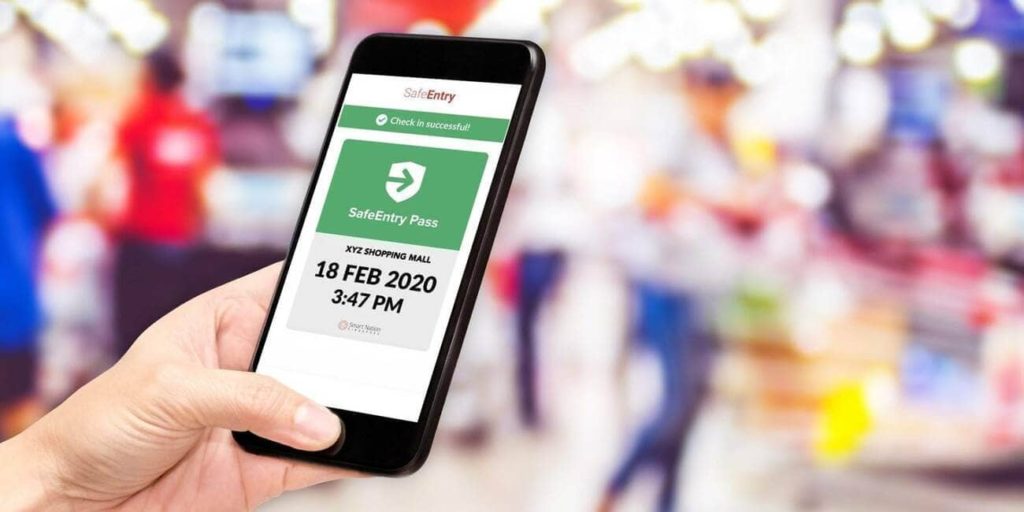
Safe Entry is a national digital check-in system which logs visits by individuals to hotspots and venues providing essential services, as well as selected public venues to facilitate contact tracing efforts. Individuals visiting these premises are required to provide key information (e.g. name, NRIC and mobile number). By scanning a personalised QR code, they can authenticate through SingPass Mobile or can choose to manually enter their details.
Implementation of Safe Entry
Alongside measures to reduce the risk of transmission in daily interactions and activities, government need to continue to strengthen contact tracing regime through the use of technology.
As announced previously, businesses and services that are in operation must come on board Safe Entry to log the check-in of employees and visitors. As a start, deployment will be made mandatory for places where individuals are likely to be in close proximity for prolonged periods or in enclosed spaces, or where there is higher traffic. To date, Safe Entry has been deployed at over 16,000 premises.
Employees and visitors should check-in and check-out of workplaces and other venues using Safe Entry to help contact tracers establish cluster links and transmission chains.
Places where Safe Entry must be deployed
In light of the COVID-19 situation, businesses have stepped up measures to ensure the safety and welfare of their tenants and customers by implementing enhanced visitor registration measures. From 12 May 2020, All businesses and services that are in operation at the following list of facilities/places must deploy the Safe Entry system to log the check-in of employees and visitors.
- Workplaces e.g. offices, factories
- Schools and educational institutes
- Pre-schools
- Healthcare facilities e.g. hospitals, clinics, TCM clinics
- Residential care facilities e.g. nursing homes
- Hairdressers/barbers
- Supermarkets
- Selected popular wet markets (Geylang Serai Market, Block 104/105 Yishun Ring Road (Chong Pang Market), Block 20/21 Marsiling Lane, and Block 505 Jurong West Street 52)
- Malls
- Hotels
Safe Entry will also be progressively rolled out to taxis from 12 May 2020 to better support contact tracing efforts for street-hail trips. Commuters should scan the Safe Entry QR codes deployed in taxis when taking street-hail trips.
Retail outlets such as convenience stores and pharmacies, as well as take-out F&B outlets, are not required but encouraged to use Safe Entry and adhere strictly to the other safe management measures, e.g. safe distancing.
User Journey of Safe Entry
- Scan designated QR code to access the Safe Entry website
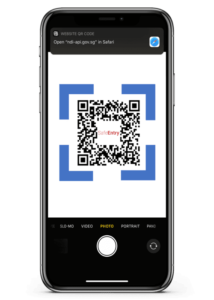
2. Select “Check-in” when entering, or “Check-out” when exiting the premises
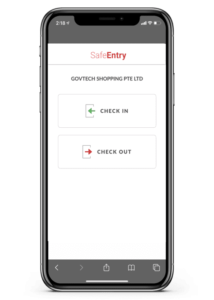
3. SingPass Mobile users can consent to the sharing of their Name, NRIC and Mobile number via the app.
If the individual does not have SingPass Mobile, the required information (Name, NRIC and Mobile number) can be manually entered.
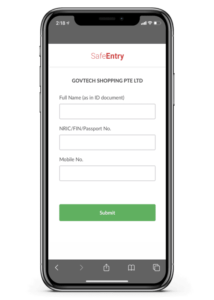
4. The check-in or check-out process is completed.
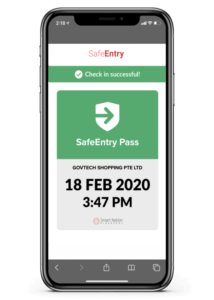
5. Non-residents working in Singapore – You can check-in with Safe Entry by show the barcode on your ID card.
The following ID card types are accepted:
– MOM-issued workpass
– MOM-issued visit passes
6. Tourists visiting Singapore – You can check-in to Safe Entry using your passport.
Why do we need to use Save Entry?
For Businesses & Operations Staff – Safe Entry supports your business by reducing manual effort needed to log the entry and exit of each and every visitor. For Individuals – Safe Entry gives you peace of mind when you need to go out for essentials. Scanning your entry and exits helps with contact tracing. It is important that everyone plays their part and uses Safe Entry, so that can collectively prevent new clusters from forming.
FAQs
No. Safe Entry is not able to support integrations with other systems at the moment.
The use of Safe Entry is mandatory because a common system used by all establishments would allow data to be made available to MOH quickly, so as to facilitate contact tracing. SafeEntry allows information of visitors and employees who may have come into contact with COVID-19 cases to be sent to the authorities automatically.
Only check-in for Safe Entry needs to be enforced. This applies to workplaces too.
Individuals visiting venues are required to provide the necessary information (i.e. check-in timings) via Safe Entry. Individuals may be denied entry if they do not provide the necessary information. To cater to visitors who do not have a suitable mobile phone to scan QR codes, or do not have their NRIC with them, venue operators are advised to station staff at the various entrance/exit points to assist with a dedicated mobile device for manual check-ins.
TraceTogether is a mobile application that is designed to supplement current contact tracing efforts. It works by exchanging short-distance Bluetooth signals between phones to detect other participating TraceTogether users in close proximity. Records of such encounters are stored locally on each user’s phone. If a user is interviewed by MOH as part of the contact tracing efforts, he/she can consent to send his/her TraceTogether data to MOH.
